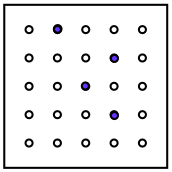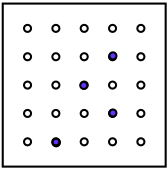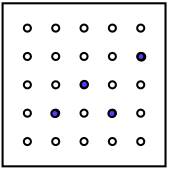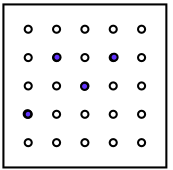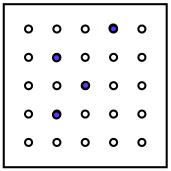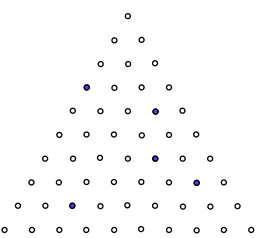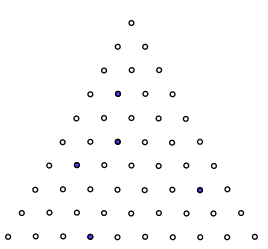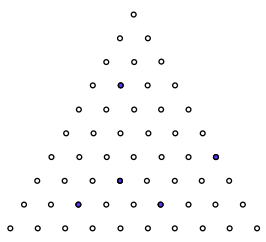Copyright © University of Cambridge. All rights reserved.
'Peg Rotation' printed from https://nrich.maths.org/
Show menu
Why do this problem?
This challenging activity offers a context in which learners can apply knowledge of transformations. Although best done practically for many pupils, some may draw on visualisation skills, at least to make hypotheses before confirming practically. The triangular arrangement of dots helps to familiarise pupils with different angles.Possible approach
This activity, as well as being done in ones or twos by the pupils, could be introduced by you challenging all the class at once. The first picture could be presented on screen, and you could ask the pupils what they would have to do with it to to see the next two pictures. You could provide pairs or small groups of pupils with an acetate grid and some dry-wipe pens to create each image for testing.You may wish to download and print these sheets for pupils:
PegRotation.pdf
PegRotation2.pdf
(The first contains just the square grids, the second contains the triangular grids.)
Key questions
Which peg/s might be helpful to focus on to begin with?Have you tried flipping/rotating the original grid?
